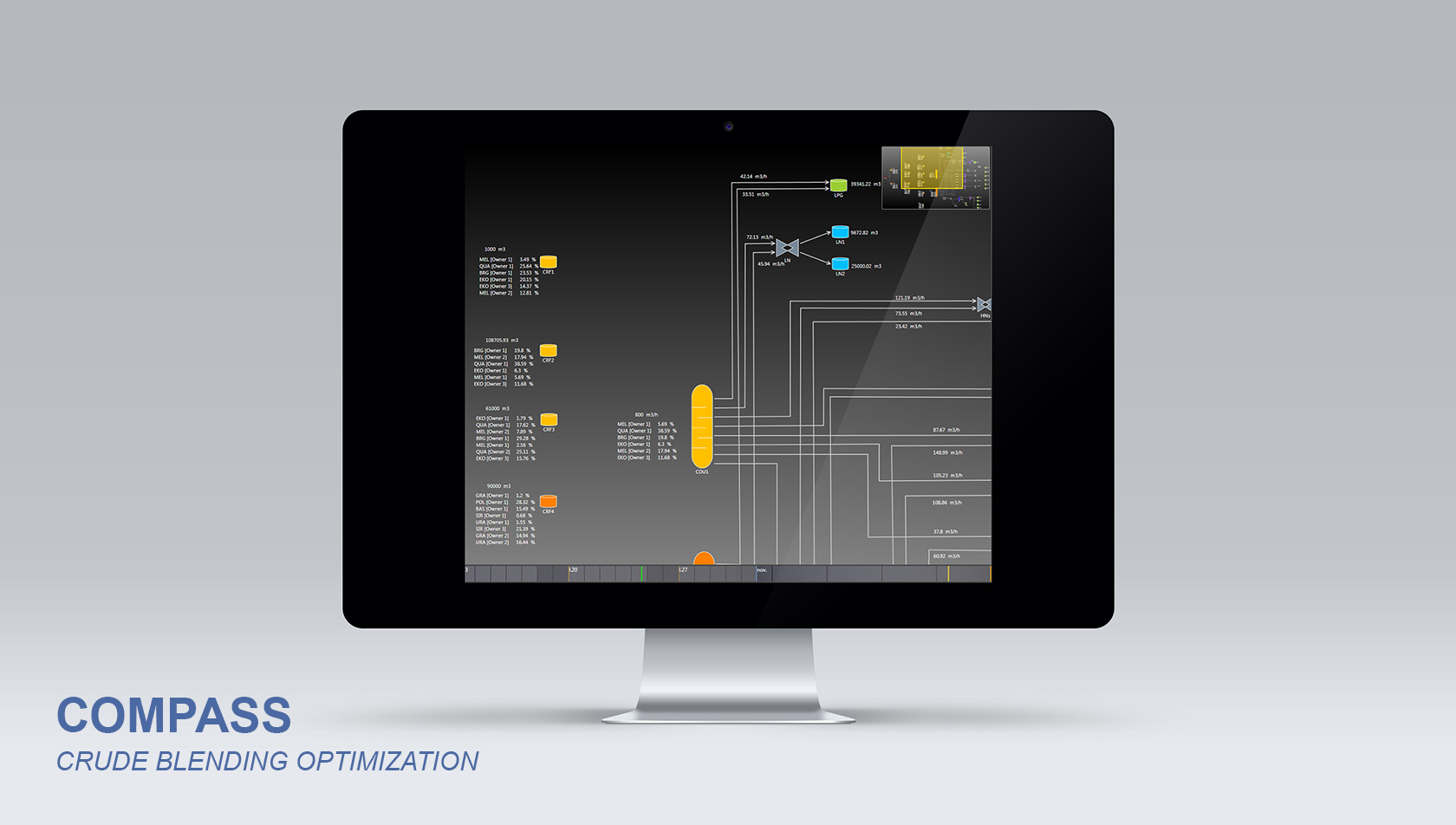Crude blending and sequencing: a difficult problem with very high impact
Crude blending optimization…
In a context where refining margins are squeezed by overcapacity, a cost-competitve access to crude oil can significantly boost a refinery’s margin.
Crudes present high variability in terms of quality, yield structure and products qualities. Correlatively, the price differential between good crudes and low quality crudes can exceed 10 $/bbl: this reflects the difficulty of processing low quality crudes.
Through this simple realization, it is evident that adequate crude blending may yield significant profits. What is meant by adequate crude blending is the ability to compensate for the bad characteristics of one crude by the good characteristic of another. The idea is to benefit from the low prices of certain difficult crudes – but to dilute their otherwise negative effects by mixing them with just the right proportions of higher-quality crudes.
However, things are a little more complex in real life operations, and optimal crude blending is a very challenging problem. This is due both to a large number of constraints, and to a large number of possible combinations (degrees of freedom) in blending and sequencing.

A large number of degrees of freedom
The first source of complexity for the crude blending problem comes from the possibility of mixing crudes at each layer of the system:
- in reception tanks
- in feed tanks
- in the feed to each crude unit
Moreover, the fact that the timing of each event can be chosen independently creates a multitude of asynchronous dynamics in the system. Therefore, the crude blending problem is about orchestrating the various crude movements Crude blending optimization…at the successive layers so that the right crude blends are successively brought to the crude unit at the right moments.
Quantifiable benefits… several millions of dollars per year
Contact us
to know more about Compass, our unique crude blending and scheduling optimization solution
Compass: A worldwide unique Crude Blending and sequencing optimization system
COMPASS for crude blending and scheduling enables the refinery schedulers to:
- formulate optimal crude oil blends,
- determine optimal cut-points,
- schedule crude receipts, crude transfers and crude runs to efficiently apply the distillation strategy
In return, it tells planners and traders that it is OK to purchase low cost crudes.
Crude arrival schedule
Crude blend quality restrictions: acidity, metals, ConCarbon
CDU feed and rundown capacities
Side streams quality limits
Crude segregation
Specific logistical restrictions
